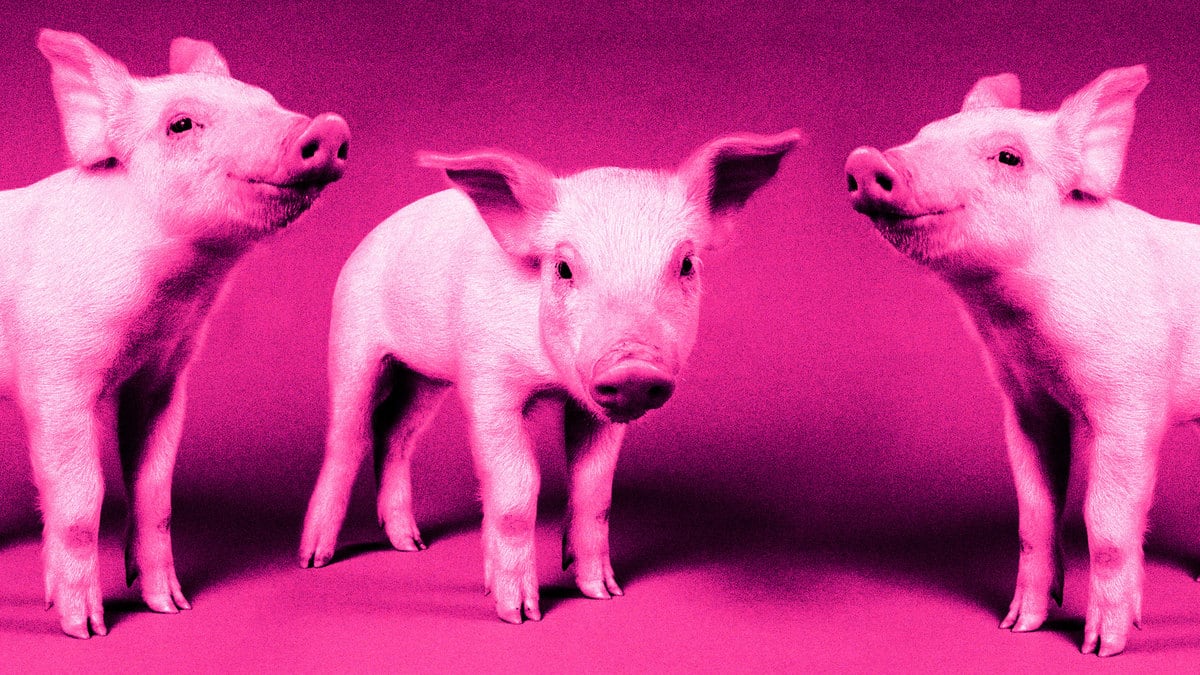H.G. Wells introduced much of the world to scientifically engineered human-animal hybrids in his novel The Island of Doctor Moreau. While the procedure is portrayed as a gruesome aberration of nature carried out by a sinister mad scientist, mixing the parts and cells of species could actually help address some of the most pressing medical issues of our time, including the organ donation shortage.
In a study published Thursday in the journal Cell Press, Chinese researchers have successfully grown humanized kidneys in living pigs—marking a major milestone in the world of xenotransplantation, the transplanting of organs from one species to another. This is the first time a humanized organ has grown in a non-human animal, and the breakthrough lays the groundwork for potentially creating other hybrid species organs as well.
“Rat organs have been produced in mice, and mouse organs have been produced in rats, but previous attempts to grow human organs in pigs have not succeeded,” senior author Liangxue Lai, a stem cell biologist at the Guangzhou Institutes of Biomedicine and Health, Chinese Academy of Sciences, said in a statement. “Our approach improves the integration of human cells into recipient tissues and allows us to grow human organs in pigs.”

This figure shows humanized kidney cells (red fluorescence) inside the embryo compared to a "wildtype" pig embryo.
Courtesy of Wang, Xie, Li, Li, and Zhang et al. / Cell Stem CellThe study is part of a controversial field of science known as chimeric research, which is the study of organisms with the cells of two or more species. Using human cells is even more ethically fraught, potentially blurring the line between people and animals, and creating concerns about the welfare of the creatures that have human cells injected into them.
However, the research could lead to significant benefits in the world of medicine and science in general. Not only could we create new organs for transplantation, but chimeric research could also help scientists gain a better understanding of diseases and how to treat them.
That’s why researchers have often turned to pigs, which have organs that are similar in size and function to humans, to study this process. In 1991, scientists were able to create genetically altered pigs that produced human blood. Later in 2021, a team from the University of Minnesota was able to create pig embryos that grew humanized muscles for 20 days.
The study from the Guangzhou team marks the first time that scientists have grown an organ in a porcine model. This process first involved using CRISPR on 1,820 pig embryos so that they were missing the genes needed to create kidneys. The team then injected altered human pluripotent stem cells—simple human cells that have the ability to grow into a wide variety of complex organs—into the embryos. The embryos were then implanted into 13 sows that grew the chimeras.
After 25 to 28 days, the researchers terminated the gestation and analyzed the embryos. They discovered that five of the embryos developed kidneys that were made up of 50 percent to 60 percent human cells and structurally normal for that stage of embryonic development. That means they had formed cells and tubes that would eventually connect the kidneys to other organs.
The human cells that grew were also localized primarily within the kidney region. That’s important, as the researchers wanted to avoid the ethical issue of having the human cells spread to other parts of the pig embryo—which would mean we would be lurching much closer to that The Island of Doctor Moreau reality.
“We found that if you create a niche in the pig embryo, then the human cells naturally go into these spaces,” senior author Zhen Dai, a stem cell biologist at Guangzhou, said in a statement. “We saw only very few human neural cells in the brain and spinal cord and no human cells in the genital ridge, indicating that the human pluripotent stem cells did not differentiate into germ cells.”
So while we might not get half-human, half-pig hybrids of a sci-fi story, we will be getting a new (albeit ethically questionable) method of addressing the organ donation shortage and studying diseases. The team now hopes to build off this research ito develop kidneys beyond 28 days. Eventually, the process could be used for human organ transplantation—though much more research is needed before that can become a reality.







